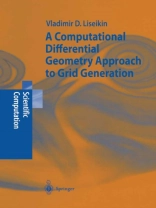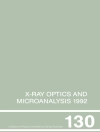Grid technology whose achievements have significant impact on the efficiency of numerical codes still remains a rapidly advancing field of computational and applied mathematics. New achievements are being added by the creation of more sophisticated techniques, modification of the available methods, and implementation of more subtle tools as well as the results of the theories of differential equations, calculas of variations, and Riemannian geometry being applied to the formulation of grid models and analysis of grid properties. The development of comprehensive differential and variational grid gen- eration techniques reviewed in the monographs of J. F. Thompson, Z. U. A. Warsi, C. W. Mastin, P. Knupp, S. Steinberg, V. D. Liseikin has been largely based on a popular concept in accordance with which a grid model realizing the required grid properties should be formulated through a linear combina- tion of basic and control grid operators with weights. A typical basic grid operator is the operator responsible for the well-posedness of the grid model and construction of unfolding grids, e. g. the Laplace equations (generalized Laplace equations for surfaces) or the functional of grid smoothness which produces fixed nonfolding grids while grid clustering is controlled by source terms in differential grid formulations or by an adaptation functional in vari- ational models. However, such a formulation does not obey the fundamental invariance laws with respect to parameterizations of physical geometries. It frequently results in cumbersome governing grid equations whose choice of weight and control functions provide conflicting grid requirements.
Vladimir D. Liseikin
Computational Differential Geometry Approach to Grid Generation [PDF ebook]
Computational Differential Geometry Approach to Grid Generation [PDF ebook]
购买此电子书可免费获赠一本!
语言 英语 ● 格式 PDF ● ISBN 9783662054154 ● 出版者 Springer Berlin Heidelberg ● 发布时间 2013 ● 下载 3 时 ● 货币 EUR ● ID 6385212 ● 复制保护 Adobe DRM
需要具备DRM功能的电子书阅读器












